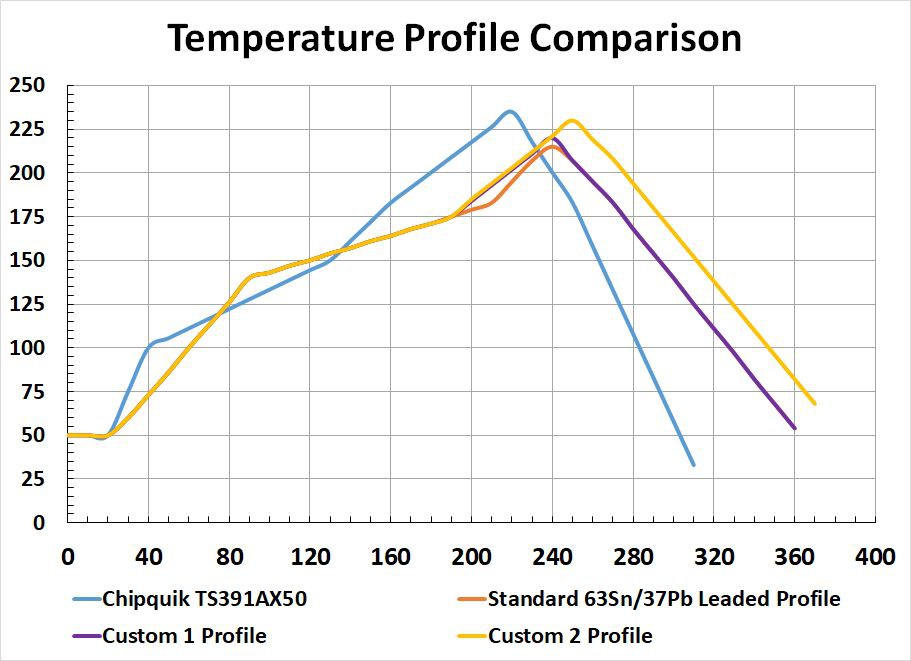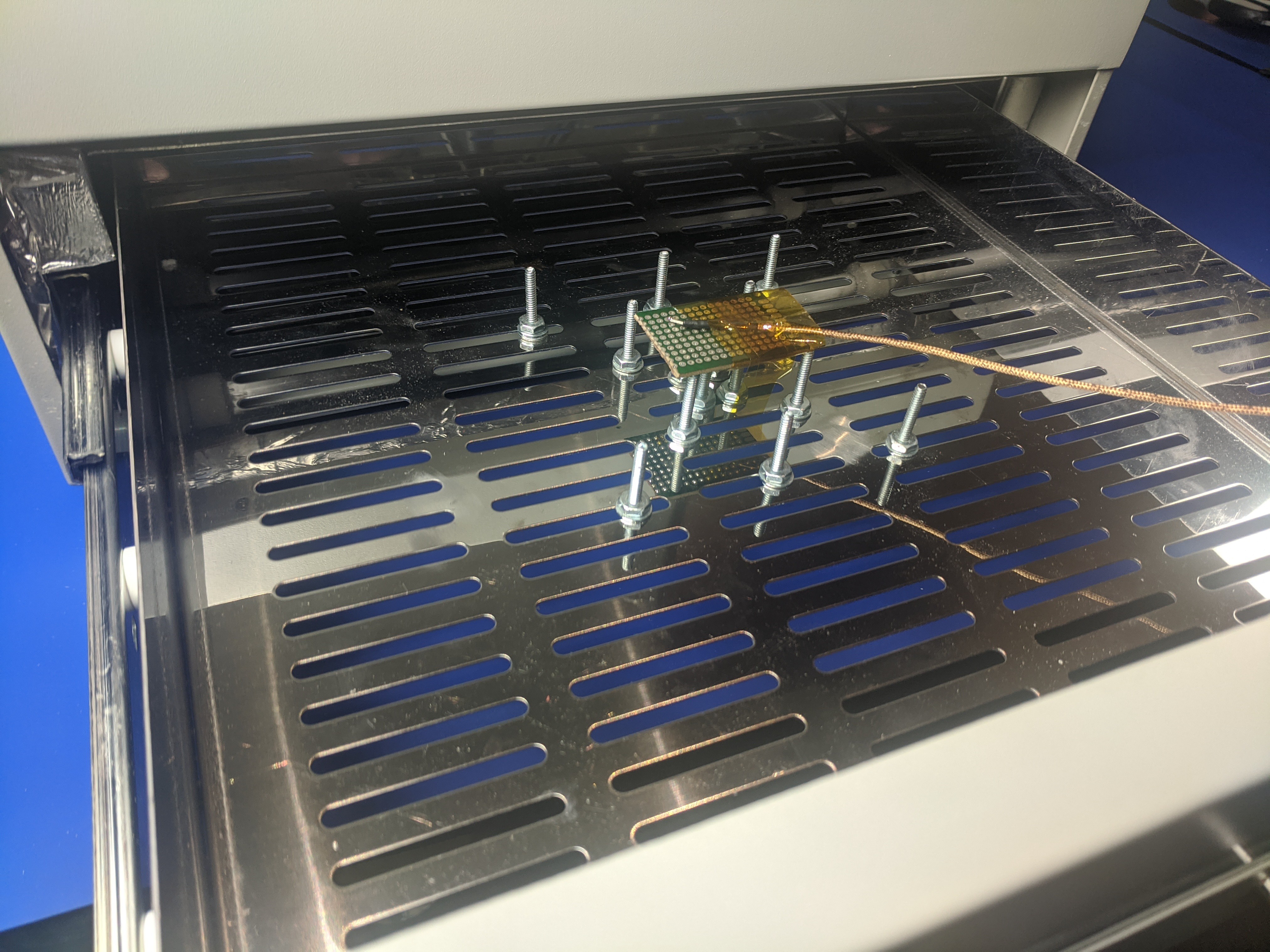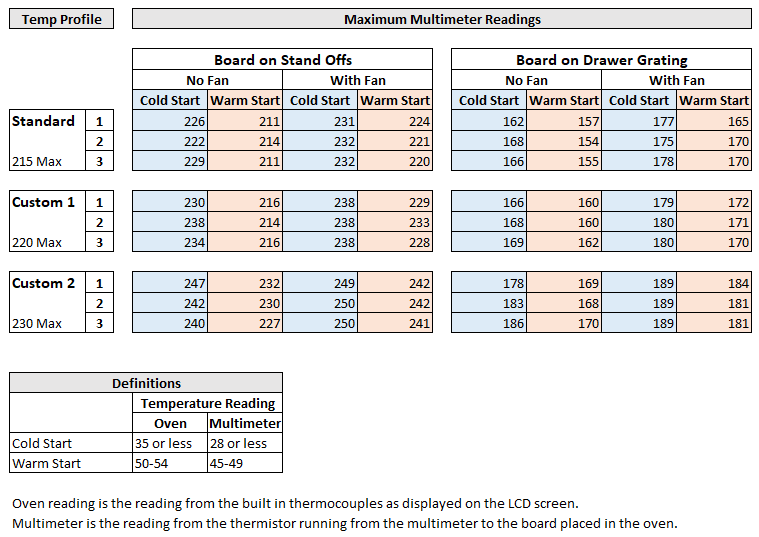Introduction
Before I started to run PCBs through the oven, I wanted to characterize the behavior. I ran a series of trials where I measure the temperature at a PCB with a multimeter. That way I could compare the temperature at the PCB with the oven's programmed temperature profile.
Initial Observations
I quickly noticed a few things. Most of these items were not surprising, but they are important to be aware of. Notably:
- The maximum temperature reached at the PCB was different than the profile's maximum temperature.
- The temperature at PCB was slightly lower than the manufacturer's recommendation for the solder paste I had (using the standard leaded profile).
- When the board rested directly on the drawer bottom, the temperature was lower than when using standoffs to place the board on.
- Running the oven consecutively resulted in a different temperature for the second trial than the first.
- The temperature reached varied depending on if the convection fan was used or not.
- The PCB did not reach maximum temperature until after the oven. The oven is in the cool-down section by the time the board maxes out.
Temperature Profiles
The standard temperature profile for leaded solder that comes with the Unified Engineering firmware. It was consistently slightly low for the solder paste I was using. Therefore, I created two new profiles for testing which reached a slightly higher temperature.
After some initial testing, it seemed that the oven could not keep up with the temperature profile (temperature climb rate). In addition, some testing showed that the standard profile that came with the oven could reflow the solder when testing without part. Therefore, I decided to slightly modify the standard profile rather than trying to use the profile provided on the solder paste data sheet. The profiles are compared in the graph below.

Methodology
The temperature probe of a multimeter was hooked to a multimeter, ran through a slot at the bottom of the oven drawer, and attached to a PCB (a piece of protoboard) in the center of the oven. See the picture below. Readings were taken for:
- 3 temperature profiles
- With and without the convection fan running
- With the board on stand offs and direction on the drawer bottom
- Cold start (oven completely at room temperature) and warm starts (oven above room temperature as a result of a previous run)
Each combination of variables was run 3 times.

Results
The results are shown below. You can download the excel file with all the data and each of the temperature profiles used from the main page.

 Lance
Lance
Discussions
Become a Hackaday.io Member
Create an account to leave a comment. Already have an account? Log In.